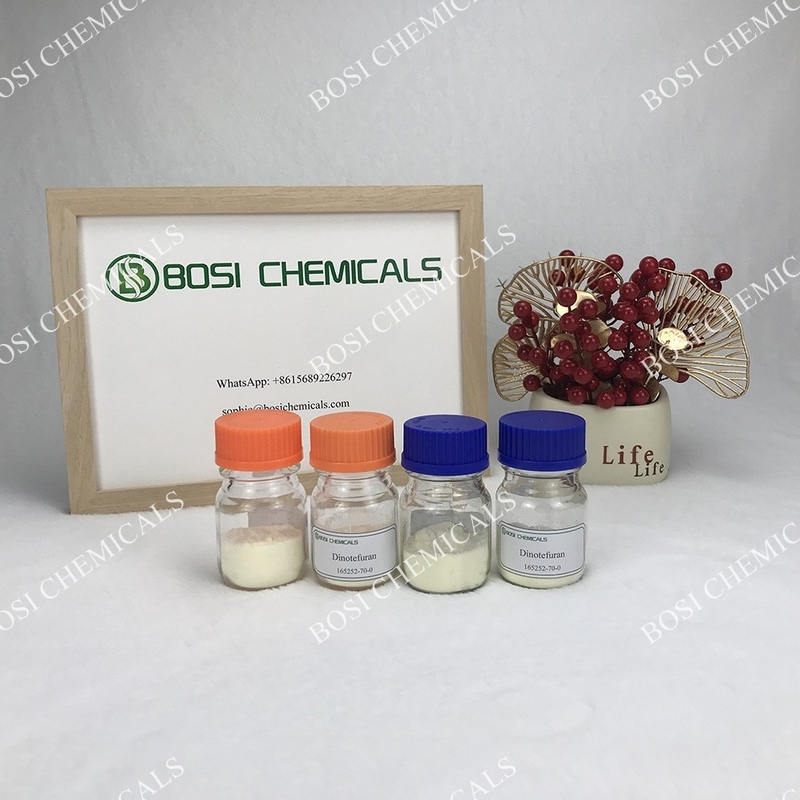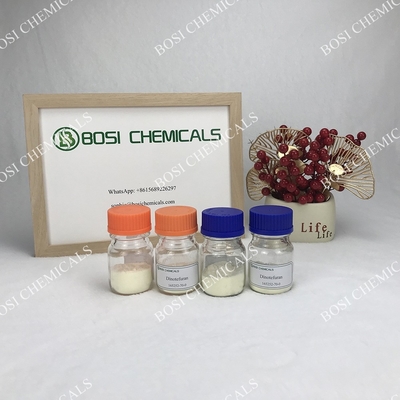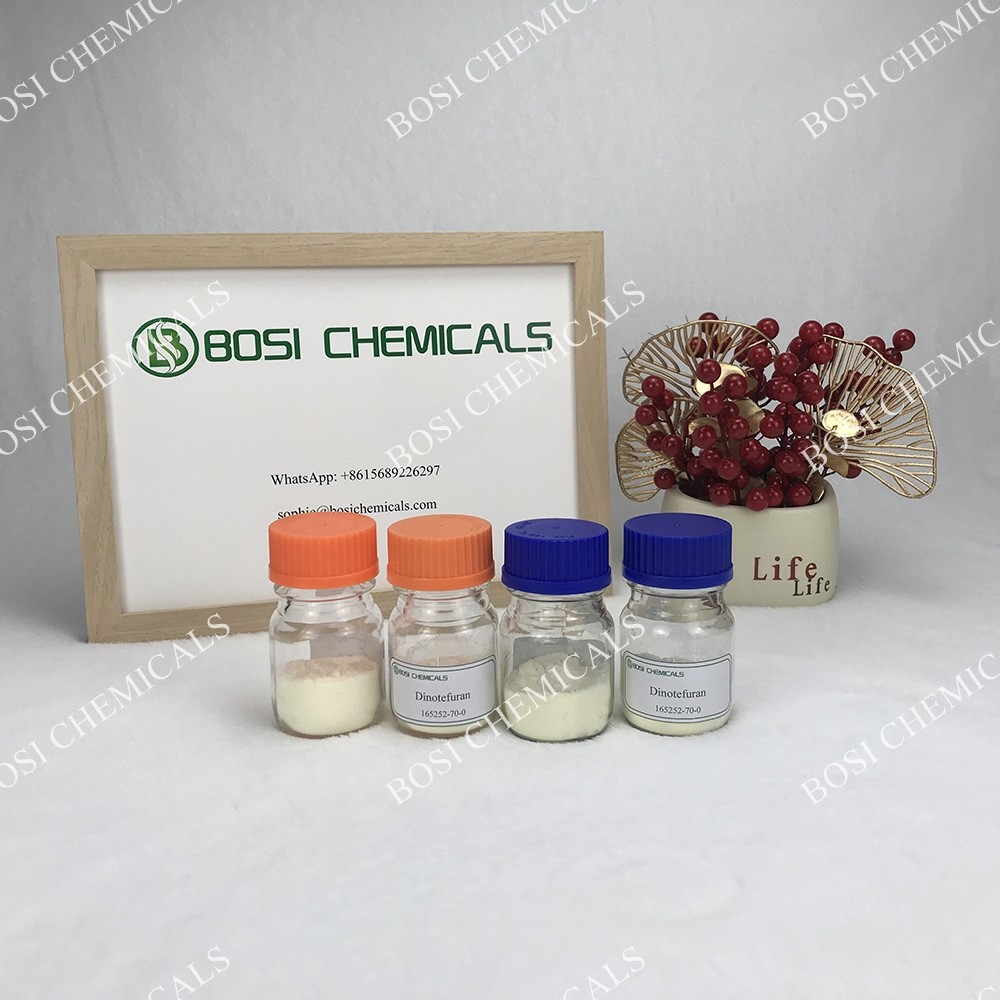Pesticide Raw Materials Dinotefuran Powder With CAS NO. 165252-70-0
Dinotefuran is an insecticide of the neonicotinoid class developed by Mitsui Chemicals for control of insect pests such as aphids, whiteflies, thrips, leafhoppers, leafminers, sawflies, mole cricket, white grubs, lacebugs, billbugs, beetles, mealybugs, and cockroaches on leafy vegetables, in residential and commercial buildings, and for professional turf management. Its mechanism of action involves disruption of the insect's nervous system by inhibiting nicotinic acetylcholine receptors. In order to avoid harming beneficial insects such as bees, it should not be applied during bloom.
In July 2013, the state of Oregon temporarily restricted the use of dinotefuran pending the results of an investigation into a large bee kill.
Dinotefuran is also used in veterinary medicine as a flea and tick preventive for dogs and as a flea preventive for cats. It is used in combination with pyriproxifen or permethrin.
Current studies show dinotefuran is effective at controlling the invasive Spotted lanternfly, first found in Berks County, PA, in 2014.

| ITEM |
CONTENT |
| Alias |
MTI-446 |
| color |
99% |
| Molecular Formula |
C7H14N4O3 |
| Storage |
Inert atmosphere,Store in freezer, under -20°C |
| CAS No. |
165252-70-0 |
| Density |
White to Pale Brown |
| Purity |
1.42±0.1 g/cm3(Predicted) |
| Flash Ponit |
156.1ºC |
| Density |
1.42±0.1 g/cm3(Predicted) |
| Coefficient of acidity (pKa) |
3.24±0.50(Predicted) |
| Sensitive |
Light Sensitive |
| Type |
Pesticide raw materials |
| Melting Point |
107.5° C |

Avoid contact with eyes, skin or clothing. When measuring and mixing the product, wear protective garment, waterproof gloves, protective mask and goggles, rubber boots, apron and hat. At spraying, wear protective garment, shoes and hat.
Wash exposed skin thoroughly with soap and water after handling and application.
Do not apply in a fish farm or in shrimp, prawn or crab pond/ nursery.
This product is toxic to bees exposed to direct treatment or residues on blooming crops or weeds. Do not apply this product or allow it to drift to blooming crops or weeds if bees are visiting the treatment area.
This product is toxic to silkworms exposed to direct treatment or residues on mulberry leaves. Do not apply this product or allow it to drift to mulberry trees.

 Your message must be between 20-3,000 characters!
Your message must be between 20-3,000 characters! Please check your E-mail!
Please check your E-mail!  Your message must be between 20-3,000 characters!
Your message must be between 20-3,000 characters! Please check your E-mail!
Please check your E-mail! 



